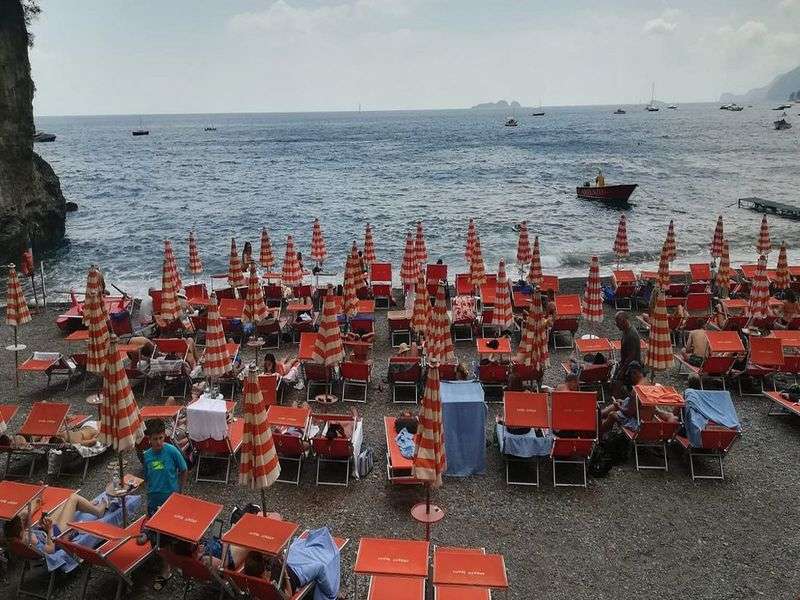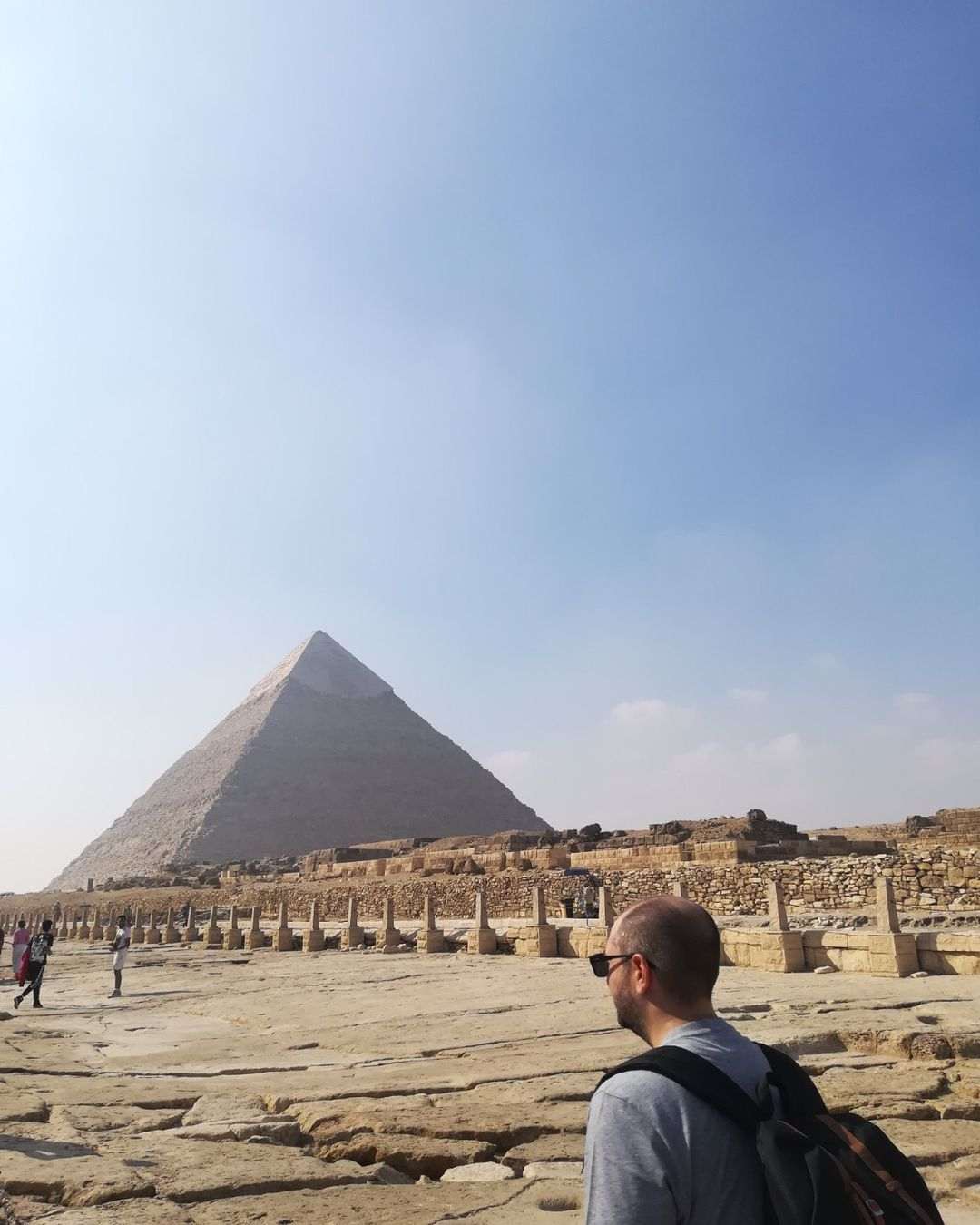 A small village, amphitheatrically built, known for its colorful buildings "hanging" from the rocks, gorgeous beaches, limoncello and its handmade ceramics. A natural wonder that attracts people from all over the planet to admire it up close. This is Positano and it is waiting to be discovered.
A small village, amphitheatrically built, known for its colorful buildings "hanging" from the rocks, gorgeous beaches, limoncello and its handmade ceramics. A natural wonder that attracts people from all over the planet to admire it up close. This is Positano and it is waiting to be discovered.
A few words about the city
Positano is located in southern Italy, in the province of Salerno in Campania and is considered one of the most popular destinations in the country. It is part of the Amalfi Coast, which was declared a UNESCO World Heritage Site in 1997! It is amphitheatrically built and world-renowned for its colorful buildings, handmade ceramics and beautiful coastlines. The population in the village is estimated at 3,758 inhabitants, who are mainly engaged in tourism. Of course, Positano did not "sprout" now, since it has been inhabited since the Upper Paleolithic period. More specifically, during an excavation in 1955 in the small La Porta cave, various fossils of molluscs and remains of animals such as wild boar, deer and fish were found, which were dated to the Mesolithic era. So I will try to present you the little village of the Tyrrhenian Sea through my own eyes and share with you what I think a first-time visitor should see.
Santa Maria Teresa dell'Assunta
The parish church of . Mary Theresa of the Dormition (Santa Maria Teresa dell'Assunta) is perhaps Positano's most iconic sight and the reason the village got its name. It is located in the heart of the village and was built in the 13th century AD. Of course, many of the elements we see today are later, with the facade dating from 1777-1782. The characteristic colorful dome of the church is covered with majolica ceramic tiles, while inside you will find the well-known Byzantine icon "Black Virgin". According to legend, the icon arrived in the village on a merchant ship, having been stolen by pirates. When the ship was sailing off the coast of Positano, it ran into a severe storm and was thus grounded. The sailors heard a voice calling to them "Posa, posa", meaning "let me down". So they made Virgin Mary their patron and built a church in her honor, while they also named their village Positano. Entrance is free.

Positano Spiaggia
The main beach of Positano (Positano Spiaggia) or Spiaggia Grande is probably the most recognizable point of the Amalfi Coast. It is easily accessible from the narrow streets of the village and extends for about 400 meters. Characteristic of this particular beach is the black sand and dozens of blue umbrellas, which in combination with the colorful houses in the background create an idyllic setting. On the left side of the beach you will find showers, while cafes and restaurants operate along its width. The truth is that in the summer months inseparability prevails and you may not find a place to leave even your towel. Still, a visit is a must!
Via dei Mulini
Positano is a place, which is suitable for endless walking in its historic center. The center of the village starts from Piazza dei Mulino, where all vehicular traffic ends, and then begins Via dei Mulini, which is pedestrianized. On this famous street you will find all the art galleries, boutiques and plenty of restaurants and cafes. Finally, the picturesque alleys parallel to the main street are a hangout for itinerant artists, while most of them end up in Piazza Flavio Gioia or on the beach.

Parrocchia di Santa Maria Delle Grazie
Just outside the center of the village is the parish Church of Santa Maria delle Grazie (Parrocchia di Santa Maria Delle Grazie). It was built on the site of an 11th century church, with the exact date of construction of the temple unknown. The new church (Chiesa Nuova) as it is nicknamed, was renovated in the second half of the 18th century, giving its name to the entire district. Due to its particular elliptical floor plan, similar to the Pantheon in Rome, the rich terracotta floor with majolica tiles and the colorful decorated walls, it is considered a representative example of a Baroque monument, created in Positano and the Amalfi Coast. Entrance is free.

La Grotta di Fornillo
Without a doubt Fornillo is one of the most enchanting and traditional neighborhoods of Positano. A landmark of the area is the cave of Fornillo (La Grotta di Fornillo), which dates back to 1600! This particular place has been transformed by the locals into a wonderful work of cement art, representing Positano and daily life there, filled with colorful miniatures. The neighborhood has always been a refuge and resting place for artists and writers. More specifically, the painters Vincenzo Caprile, Maurits Cornelis Escher, Massimo Campigli, Raffaele Bella, the playwright Giulio Cesare Viola, the playwright, director and screenwriter Aldo Di Benedetto and many others lived there. Finally, don't miss the opportunity to visit the Fornillo beach, which is considered one of the best in the area.

MAR Positano-Villa Romana
Visiting Positano, one would hardly expect to come across an interesting archaeological site or museum. Nevertheless, under the parish church of Santa Maria Teresa dell'Assunta there is a treasure that you should not miss! The Roman archaeological museum-Roman Villa (MAR- Villa Romana) was inaugurated on July 18, 2018. After the eruption of Vesuvius, the Villa was buried by the lava ashes to a depth of 11 meters and remained so until 2003. If you expect to see a museum with its classical structure, then you will be surprised by what you will see. Essentially it is an archaeological site, divided into an underground complex with two crypts and a room of a Roman villa, dating from the 1st century BC. In the Upper Crypt all the objects found during the excavations (jugs, vases and cups) are exhibited, while in the room of the Roman villa you will find impressive frescoes characterized by their intense colors and considered a sample of frescoes in Roman villas on the Amalfi coast. Entrance costs 15e.

Il Sentiero degli Dei
If you are a sporty type, then Positano is definitely the place for you. In addition to the countless steps and hills that you will have to cross to explore it, there are also many famous hiking trails in the area. The most famous of these is the Path of the Gods (Il Sentiero degli Dei). It is a seven kilometer route, which dates from the 8th century BC, when the Greeks carved it for the first time. This particular ride is one of those instances where words cannot describe the experience and a picture is literally "worth a thousand words". So the climb may be a bit difficult, but the panoramic view of the Amalfi Coast from above will compensate you.

Beaches
For the end I left some of the most beautiful beaches that one can find in and around Positano. So, apart from the main beach of Positano and the beach of Fornillo, which I mentioned above, it is worth visiting Laurito beach first. It is a small but enchanting beach, surrounded by rocks, where two restaurants also operate. Equally charming is the sandy Bay of Arienzo with its wonderful view and turquoise waters. Finally, I recommend Tordigliano beach, which is a well-hidden beach that is not so well known to the world. It is surrounded by verdant mountains and you can approach it by following a picturesque path.

How to go
There is no airport in Positano, so you will have to reach the village either by ferry or bus from a nearby town. The most convenient is, of course, Naples. As we have seen in a previous article, Thessaloniki is connected by air to Naples and the Aeroporto Internazionale di Napoli airport, through Ryanair. With proper planning, one can find tickets starting from €24 round trip! Then you can board one of the boats from the port of Naples that cover the Amalfi Coast and you will be in the village in about two hours. If you decide to approach Positano by bus, you will spend about 20 minutes more, but it will definitely be cheaper!
Where to stay
As one of Italy's most popular destinations, accommodation in Positano is particularly expensive during the summer months. What we call value for money is usually non-existent, as most of the accommodation is overpriced. However, there are always opportunities, so my suggestion is Casa Maria Grazia. A fully renovated room, in the center of the village, with a wonderful view of the sea and the colorful houses of Positano.
How to move
Positano is very small and in fact in its largest part, cars cannot enter. This means you can easily get around everything on foot. Nevertheless, there are buses and ferry boats that connect Positano with the rest of the Amalfi Coast.
What to eat
As Positano is right on the sea, fish and seafood are the specialty of the area. So, in addition to fresh seafood dishes, it is worth trying Spaghetti alle vongole, i.e. spaghetti with mussels, pizza marinara only with red sauce, onion soup with saffron, and Il totano imbottito (squid, usually stuffed with nuts, cheese, eggs and herbs) and whatever has something to do with lemon. From the famous digestive local liqueur limoncello, to candies, cakes and ice cream.
Useful information

In Italy we travel with a new type of Passport or Police ID, where the details are written in Latin characters.
In Positano the language used is, of course, Italian. But most, if not all, speak English, so ask for clarification in English.
The currency of the country is the Euro.
Positano is one hour behind Greece (GMT +2).
There is no Greek embassy or consulate in Positano, so if you need anything you should contact the nearest one, which is located in Naples at Corso V. Emanuele, 86 and its phone number is (0039081)7612466.
The roads to Positano are very narrow, so that only one car can fit. So if you rent a vehicle, make sure you get a small one, otherwise you might have a hard time.
Positano is a purely summer destination, so be sure to choose it during this period. Otherwise, you will be in for a surprise, since most shops, restaurants, cafes, as well as any attractions are usually closed.
Recommended excursions → Sorrento, Amalfi, Salerno, Naples, Capri

If this article seemed interesting or contributed to your quality information, then you can like my facebook page: o_thessalonikios or follow me on instagram!
Mouzakidis Pantelis








